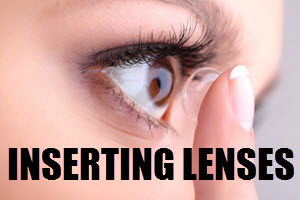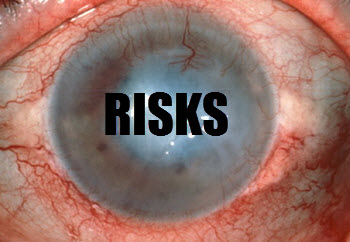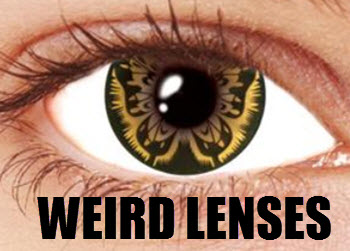Understanding Decorative Lenses and Allergic Reactions
Decorative lenses, commonly referred to as cosmetic contact lenses, serve as a popular fashion accessory primarily intended to alter the aesthetic appeal of the eyes. These lenses can either subtly enhance the natural beauty of your eyes or radically transform their appearance for a unique look. Despite their popularity, it is crucial for users to be informed about the potential for allergic reactions that might arise from their use. These reactions can manifest as mild irritation, but can also escalate into more severe complications if not managed appropriately.
Consult with an Eye Care Professional
Prior to purchasing decorative lenses, it is advisable to schedule a consultation with an eye care professional. This initial step is essential in ensuring that lenses are a safe option tailored to meet your specific needs. The eye care professional will typically conduct a comprehensive eye exam to determine whether your eyes are suited for contact lens wear. If determined to be appropriate, they will prescribe lenses that fit properly, reduce potential irritation, and minimize the risk of adverse reactions.
By providing personalized advice, eye care professionals help navigate the vast array of options available, ensuring that consumers make informed and safe choices regarding decorative lenses.
Purchase from Reputable Sources
When considering decorative lenses, it is paramount to purchase from authorized and reputable sources. Licensed retailers, opticians, or eye care providers are reliable sources, as they offer products that adhere to stringent safety standards. Opting for lenses from these providers helps in securing a product that is not only high in quality but also safe for ocular use.
Conversely, purchasing lenses from unauthorized online platforms or novelty shops may entail significant risks. These locations may distribute substandard products that fail to comply with safety regulations, thus increasing the likelihood of exposure to harmful materials that can lead to irritation or allergic reactions.
Check Ingredients for Potential Allergens
Before introducing decorative lenses into your regime, it is prudent to thoroughly review the materials utilized in their manufacturing. Such diligence is crucial, particularly for individuals with known allergies, as some may be sensitive to specific components found within the lenses. Common allergens can include certain preservatives or dyes integrated into the lens composition.
Consulting with your eye care professional about any known allergens can guide the selection of hypoallergenic alternatives. These alternatives are designed to mitigate the risk of allergic reactions, ensuring that lens wear remains a comfortable and enjoyable experience.
Follow Proper Lens Care Practices
Upholding rigorous hygiene standards is imperative in minimizing the risk of allergic reactions when handling decorative lenses. Proper lens care practices encompass several fundamental steps:
- Cleaning and disinfecting lenses: Regularly utilize recommended cleaning solutions to disinfect and maintain lens cleanliness. This reduces bacterial buildup and potential irritants.
- Washing your hands: Ensure hands are thoroughly washed and dried before handling lenses, preventing the transfer of dirt and contaminants from your hands to your eyes.
- Replacing lenses: Adhere strictly to the replacement schedule prescribed by your eye care professional or the manufacturer’s guidelines to ensure lens integrity and safety.
Adhering to these practices plays a vital role in safeguarding against potential allergens and preserving eye health.
Monitor for Symptoms
Vigilance in detecting signs of an allergic reaction is crucial while wearing decorative lenses. Common symptoms include redness, itching, burning sensations, or blurry vision. The appearance of such symptoms should prompt the immediate removal of the lenses. Following removal, seek consultation with an eye care professional to address potential issues.
In cases where symptoms persist beyond the removal of lenses, medical intervention may become necessary. Persistent symptoms can signal an underlying allergy that requires professional diagnosis and treatment.
Avoid Prolonged Wear
To mitigate the risk of allergic reactions and other adverse effects, avoid the temptation to wear decorative lenses for durations exceeding the recommended guidelines. Prolonged wear not only causes undue strain to the eyes but also heightens the probability of adverse reactions. Be sure to respect and adhere to the guidelines provided with your lenses concerning maximum wear time and frequency of use.
Regularly Check Eye Health
Routine eye examinations form a cornerstone of maintaining healthy eyes, particularly for regular contact lens users. Scheduling periodic check-ups with your eye care provider provides an opportunity to catch any potential issues early and manage them proactively.
Regular assessments allow for appropriate adjustments to your lens prescription or wear schedule, ensuring your eyes remain healthy and that lens use continues seamlessly without complications.
To delve deeper into decorative lenses and their safe use, consider exploring informative resources made available by reputable organizations. You may also visit dedicated websites such as the American Academy of Ophthalmology for insights into safe lens practices and understanding eye conditions better.
By staying informed and vigilant about these practices, users can enjoy the aesthetic benefits of decorative lenses while minimizing potential risks to their eye health.



 Cosmetic contact lenses
Cosmetic contact lenses